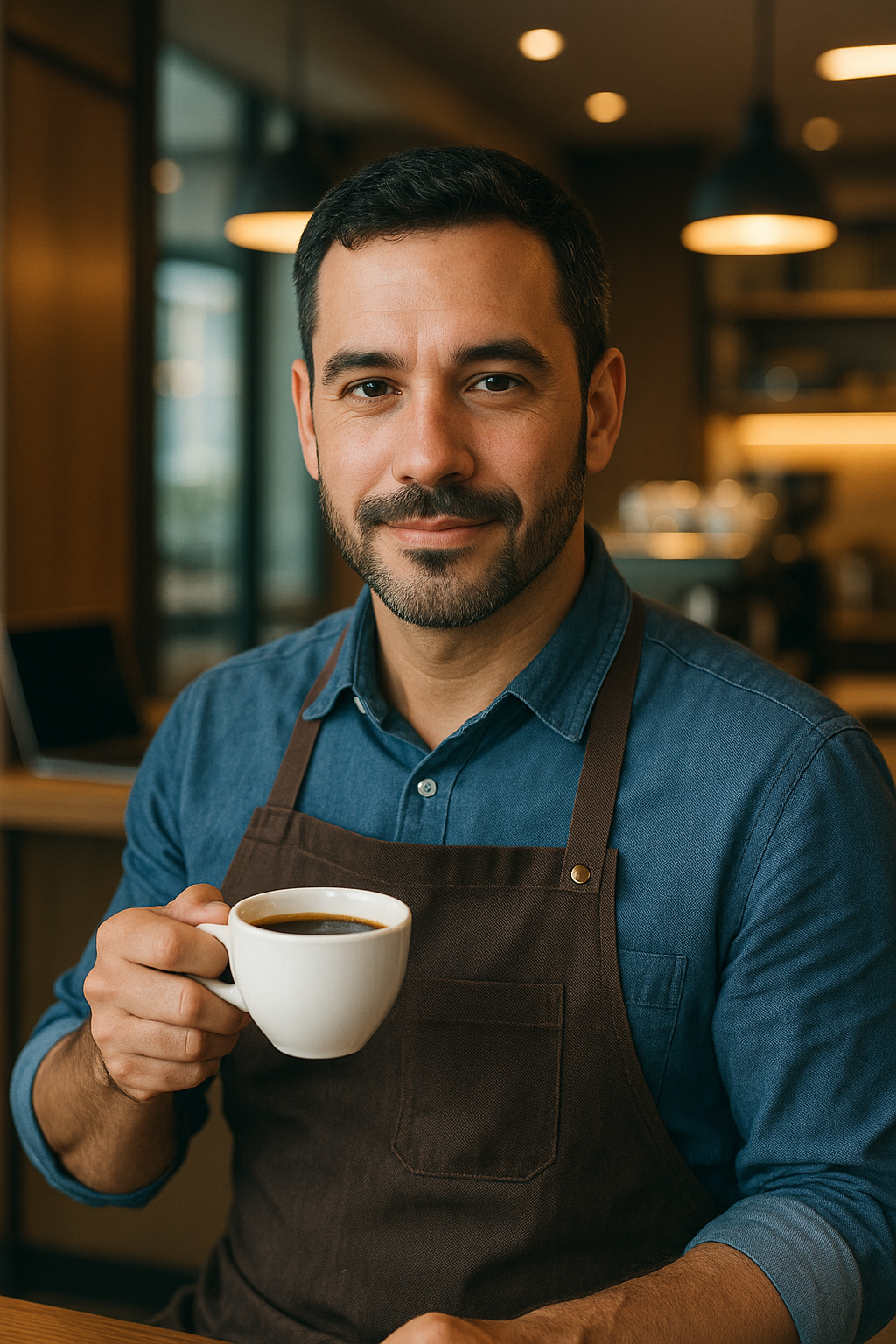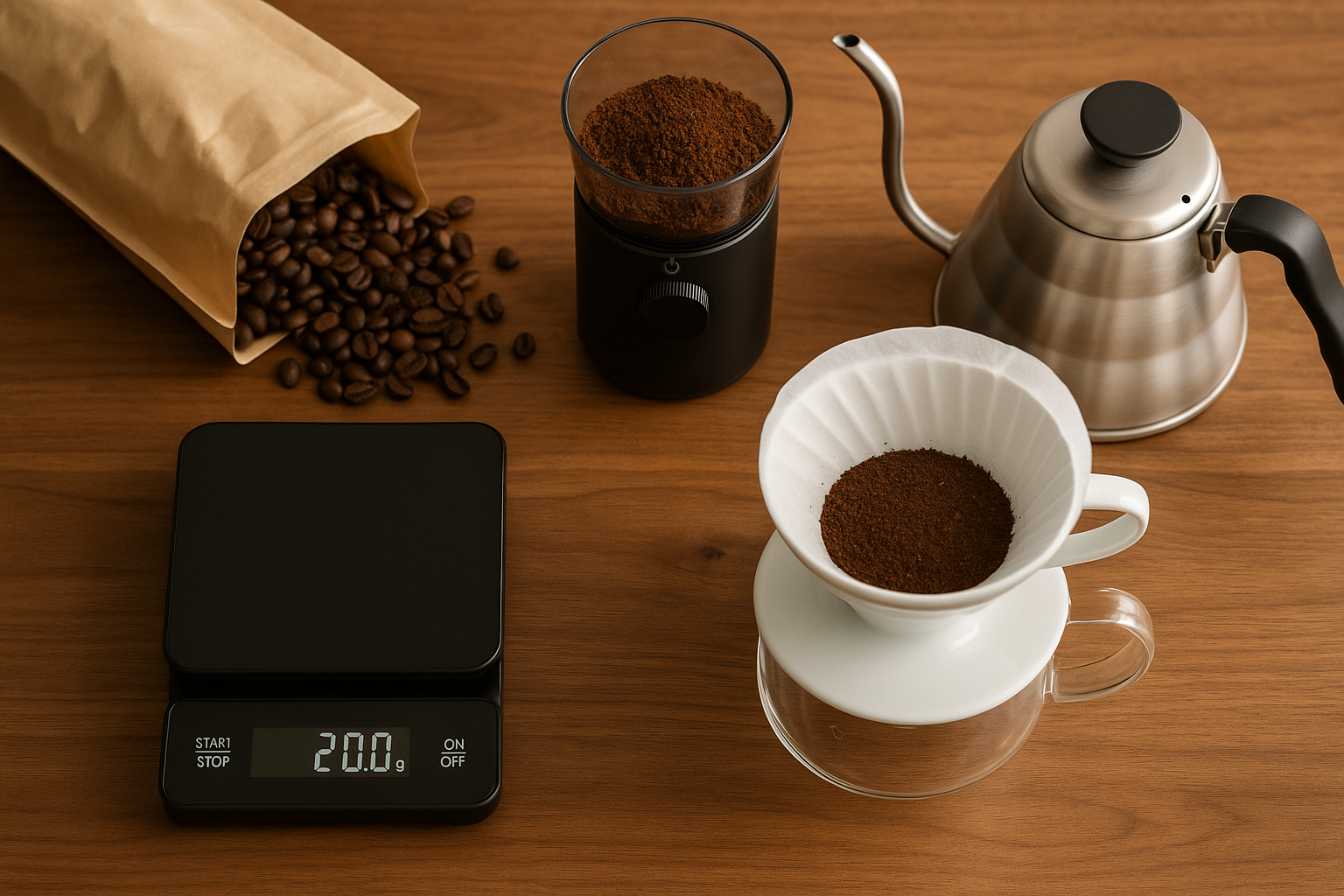You don’t need a $3,000 espresso machine or a certificate from a barista academy to make incredible coffee at home.
In fact, some of the most satisfying cups of coffee come from simple setups—when paired with smart techniques and a little attention to detail.
Whether you’re just starting your home brewing journey or looking to level up your skills, this guide will walk you through 10 essential tips that will dramatically improve your home coffee—helping you create a cup that’s rich, balanced, and delicious, every time.
1. Start With Fresh, High-Quality Beans
It all begins with the beans. Coffee starts losing flavor within weeks of roasting, so buying freshly roasted, whole-bean coffee is one of the most impactful steps you can take.
What to look for:
- Roast date (not just “best by” date)
- Whole beans instead of pre-ground
- Beans suited to your brewing method (e.g., medium roast for pour-over)
Pro Tip: Avoid supermarket shelves—check out local roasters or trusted online stores.
2. Grind Fresh—Right Before You Brew
Pre-ground coffee stales faster than whole beans. Grinding releases aroma compounds, which dissipate quickly once exposed to air.
Use a burr grinder instead of a blade grinder. Burr grinders produce consistent particles, allowing for more even extraction.
Match grind size to method:
- Coarse – French Press, Cold Brew
- Medium – Drip machines, AeroPress
- Medium-fine – Pour-over
- Fine – Moka pot, Espresso
3. Use the Right Coffee-to-Water Ratio
This is where many home brewers go wrong. Using too much or too little coffee can throw off the balance of flavor.
General guideline:
- 1:15 to 1:17 ratio (1g of coffee per 15–17g of water)
For example, use 20g of coffee with 300–340g of water for a pour-over.
Use a digital scale to get precise and repeatable results. Scoops and tablespoons are inconsistent.
4. Use Filtered Water
Coffee is over 98% water. If your tap water tastes off, your coffee will too. Chlorine, heavy minerals, or flat-tasting water can mute flavor or add unpleasant notes.
Use:
- Filtered water (Brita or Pur pitcher)
- Bottled spring water
- Third Wave Water packets (for advanced brewers)
Avoid distilled or RO water without minerals—it won’t extract coffee properly.
5. Control Water Temperature
Water that’s too hot can scorch the coffee; too cool, and the coffee will be under-extracted.
Target temperature:
- 195°F to 205°F (90°C to 96°C)
If you don’t have a kettle with a thermometer, boil water and let it sit for 30 seconds before pouring.
Consistency in temperature leads to more reliable results.
6. Rinse Your Filter (If Using One)
If you’re using a paper filter (like in a Chemex or V60), rinse it thoroughly with hot water before adding your coffee. This removes:
- The papery taste
- Dust and particles
- Helps warm up your brewing vessel
Don’t skip this—it’s a tiny step with a big flavor payoff.
7. Master the Bloom
Freshly roasted coffee releases CO₂ when water hits it. This gas pushes water away from the grounds, disrupting even extraction.
How to bloom:
- Pour a small amount of hot water (twice the weight of the coffee)
- Let it sit for 30–45 seconds
- Then continue brewing
Blooming improves flavor clarity and helps prevent sour notes.
8. Time Your Brew
Time is a critical part of coffee extraction. Brew too fast, and the coffee will taste weak or sour. Brew too slowly, and you’ll get bitterness.
Recommended brew times:
- French Press: 4–5 minutes
- Pour-over: 2.5–4 minutes
- AeroPress: 1–2 minutes
- Espresso: 25–30 seconds
Use a timer or stopwatch app to stay consistent.
9. Keep Your Equipment Clean
Old coffee oils and residue build up fast, and they taste rancid. A clean coffee setup ensures that your cup tastes like fresh coffee—not last week’s leftovers.
Clean:
- Grinder burrs (monthly)
- Drippers, presses, and carafes (after every use)
- Espresso machine group head and portafilter (daily)
Use gentle soap, water, and the occasional descaling or cleaning solution.
10. Take Notes and Experiment
Baristas don’t guess—they experiment. Keep a coffee journal with details like:
- Bean origin and roast
- Grind size
- Brew time
- Water ratio
- Taste notes
From there, tweak one variable at a time (grind, dose, time) to hone in on your perfect cup. This is how you’ll truly master your home brew.
Final Thoughts: You’re the Barista Now
Making café-quality coffee at home isn’t about having the most expensive gear. It’s about understanding the process, using good ingredients, and practicing a little each day.
With fresh beans, a scale, a decent grinder, and the right water, you’re already 90% of the way there. The rest? It’s just care, repetition, and curiosity.
Start with these 10 tips and you’ll be well on your way to enjoying better coffee—made by your favorite barista: you.

Marcelo Oliveira is a coffee enthusiast and content creator specializing in barista skills, brewing methods, equipment reviews, coffee-related health insights, and fascinating curiosities from the coffee world. With a deep passion for every step of the brewing process, he turns technical knowledge into accessible and engaging content for both beginners and seasoned coffee lovers. Marcelo’s goal is to help readers appreciate the full experience of coffee—from bean to cup.
